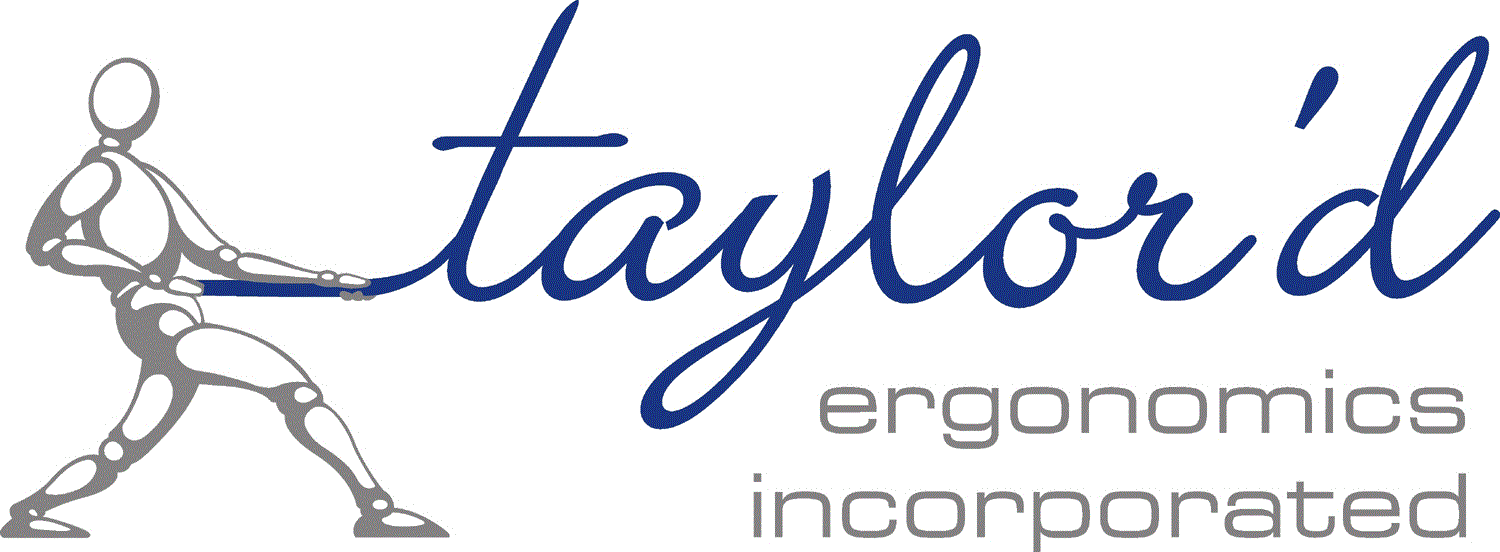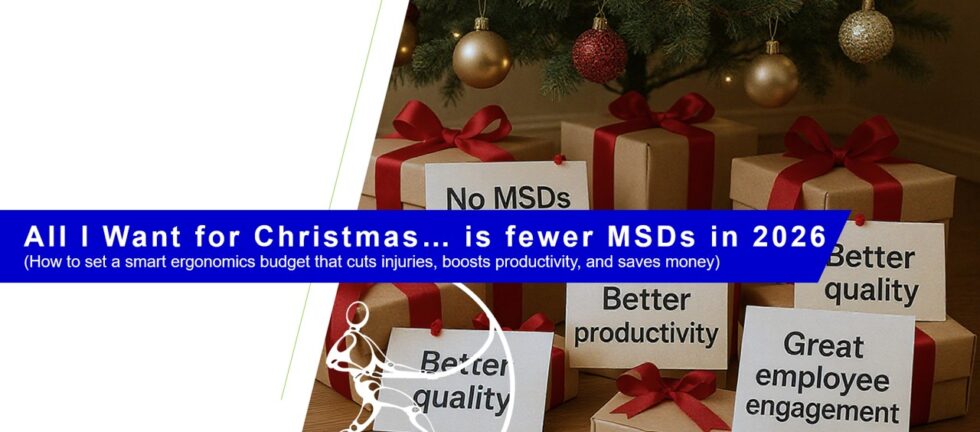All I want for Christmas… is fewer injuries, higher productivity, and a stress-free budget request. As organizations plan their 2026 budgets, here are some ways to make sure ergonomics is on your wish list.
Start with numbers
What you ask for, ideally, should align with what you need. And what you need relates back to the problems that you’re experiencing.
Here are some questions to get you started….
What percentage of my claims are strain/sprain injuries? (In Ontario, you may find information about this, and costs, at https://safetycheck.onlineservices.wsib.on.ca/safetycheck/explore/search?lang=en)
What costs have been incurred over the past few years? Are injuries trending up or down?
What supervisors and managers see
What challenges do supervisors and managers report? Do they have trouble getting people trained? Do they have certain jobs that are difficult to fill, or where people can’t keep up to the expected work pace?
What quality data shows
What challenges does your quality manager report? Are certain issues associated with high costs for warranty claims, complaints, or re-work? Do these align with specific jobs?
Turning findings into a business case
Answering these questions will help you uncover costs…if your organization is spending money on these issues, ergonomics interventions can be cost-justified. As rough figures, the Ontario Ergonomics Intervention Cost-Benefit Calculator suggests that an ergonomics intervention that eliminates risk can:
- Reduce claims by 70%
- Increase productivity by up to 10%
These are modest claims – many projects yield even greater improvements. (We’ll show you how to estimate savings on Nov 13!) The calculator suggestions that the indirect injury costs add 1.1 to 4.5 times the direct costs.
Don’t ignore the potential for quality improvements – eliminating the need to “100% check” or repair parts can offer an enormous cost-savings. In a 2015 summary of cost-benefit analyses (https://www.researchgate.net/publication/287811850_Ergonomics_cost_benefit_case_study_collection), Goggins et al cited numerous studies showing quality improvements, including one that reduced the scrap rate from 10 percent to less than 1 percent.
If you uncover significant costs, I encourage you to consider an “on-site ergonomist.” Ask me for info about having one of our ergonomists on-site one day/week!! I’ll send you our 2026 package, including pricing.
No injuries? Here’s why you still need a budget
Perhaps your program is mature, and you just need to maintain a high level of employee engagement with ergonomics. (An annual games day event, some refresher training, and support on an as-needed basis would help.)
Or perhaps you just don’t have injuries, yet.
Do supervisors often report “Re-instruct the worker” as the corrective action for incidents? If so, are they equipped to provide that instruction? (If so, why do they have to repeat it? Microlearning would provide the tools they need to give workers useful strategies to avoid injury.)
Do workers often post out of jobs a day after they start them? (A PCDA could help workers to understand the job before they accept the post.)
Have you seen workers stretching and massaging their joints or muscles? (A Move-it © workplace activity program would help them to avoid injuries.)
Does the WSIB or your insurance carrier ask for detailed job descriptions? (PCDAs for the jobs where injuries occur, and where you most often return workers, would speed up the claims process.)
Are you bringing in new equipment? (Get ergonomics input at the design stage, and send your engineers for training (on October 23!) so they can make sure the new equipment is “ergo.”)
Whether you need a cost-justified ergonomics program or simply want to maintain a strong safety culture, we can help you plan for 2026. Reach out to Carrie@TaylordErgo.com to talk ballpark figures and practical options.


